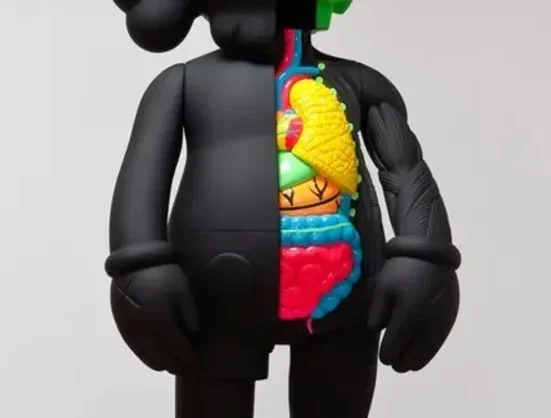Maybe it is a good time to stick your head in the sand
“Things are very bad this year, but remember that we’re coming off a great 2024, and now we have a really terrible, so far, 2025,” said Art Stein.
Whether it’s the Trump tariffs or his bickering with the Federal Reserve chair, no one can say for certain. But stocks have tanked, and its got anyone with a Thrift Savings Plan biting their fingernails. For an assessment of how bad things are, the Federal Drive with Tom Temin turned to certified financial planner Art Stein of Arthur Stein Financial.
Interview transcript:
Tom Temin And fair to say things are pretty bad in at least some of the TSP accounts?
Art Stein Things are very bad this year, but remember that we’re coming off a great 2024, and now we have a really terrible, so far, 2025. For instance, the C fund through the end of March, the first quarter was down 4.3%, and the last couple of weeks have been so bad that now, year-to-date, the C fund’s down 9.8% which is a huge change. We saw a similar change, not quite as dramatic, in the S fund. But we’ve seen some other gains: The F fund’s doing okay, it’s up 2% for the year — this is through Friday — and the I fund has been very resilient. Although there are special reasons for that. But for people who say were in the TSP and those funds for the last five years, they’ve had great returns the average return for the C fund over the last five years — this is through the end of March — was 18.6%. You can’t go wrong with that. And it’s just another example of stocks being a good long-term investment historically but not a good short-term investment. And this short term has been extremely bad. Now a lot of people I speak to, their big concern is not so much the market drop, because we’ve seen drops like this before and we will again. And of course this drop could get even worse; I mean we’re not yet really in a bear market with the C fund. But they just feel like things are different because the government’s been damaged, our relations with other countries have been damaged, our faith in our system has been damaged. There’s a lot going on and I don’t know how to process that. I certainly can’t forecast it. But I can point out that every time we have a major, huge market drop, it seems different. Certainly COVID did. That looked like the end of the world. And even 2007-09, when we had the financial crisis and the housing crisis, that was pretty unprecedented in the United States in terms of the level of damage that was done to major institutions.
Tom Temin Sure, and yet a few years later, we ended up with a 45,000 Dow Jones industrial average. So maybe this too shall pass, but I also wanted to ask about the G Fund, which through April just a couple of weeks ago was up 1.3%. But if the [Federal Reserve] does cut the interest rates, that would affect the G fund.
Art Stein Yeah, when the Fed cuts interest rates, the rates of return on the G fund are lower. It doesn’t go down. Your investment is not to going to decline in value the way that it could with the F fund. But it means your future rate of return for the G Fund is going to be lower. And, of course, returns for the G Fund have declined for decades. You’re not getting anywhere near the rate of return as when it was first introduced and even 10-15 years ago, and that’s a negative for the G fund; it’s a positive for pretty much everything else because it’s the result of interest rates being lower in the United States
Tom Temin We’re speaking with Art Stein, certified financial planner and proprietor of Arthur Stein Financial. And even though, yes, long-term things could get better, but for those Feds that are being forced into retirement now and in this period, and there are a lot of them, this is the other unprecedented piece we’re seeing, they might need to use their TSP. And so it’s a really rough time to take money out of investments because it is low and you would miss the upside.
Art Stein Exactly right, Tom. And there’s actually a more formal name for that called sequence of return risks. And it basically says that if you have to take money from your investments early in your retirement, when the investments have declined, it’s worse for you than if you are taking money from them during normal times. So it is a very scary time for a lot of reasons. One disadvantage of TSP is at times like this if you needed money to take out and spend, you’d like it to take it from the G and the F fund, which haven’t declined this year, instead of the stock funds or maybe even from the I fund which all of a sudden is doing well. But the TSP does not allow you to do that. When you take the money out, it comes out proportionally from each of the funds that you’re invested in. So if you had 50% in C and 50% in G, when you take money out, half of it would come from the C fund and you don’t want that. And it’s one of the reasons many people, when they are retired or approaching retirement, transfer their money to an IRA because with an IRA, all IRAs, if you’re in an S&P 500 index fund and a bond fund, you could take the money just from the bond fund or just from the stock fund in any proportions that you want so there’s a lot more flexibility there.
Tom Temin Yes, because with the TSP, the only control you have is to change your allocation and indirectly affect which ones you take from. It’s interesting, you’ve provided the chart showing the asset allocation history over a number of years – 15, 16 years – and the G Fund has steadily kind of come down. It’s ratcheted, but it’s way down from where it was. And the L Fund surpassed the G fund just recently, whatever that means. And the C fund is the one that’s really up a lot over the long term.
Art Stein Yeah, and there are a variety of reasons for that, Tom. One of them is that the returns on the C fund have been much better than for the bond funds and better than any of the L funds, because the L Funds are really heavily invested in the G Fund in comparison to the F Fund, which is the intermediate term bond fund. But we’ve been seeing that for a long time. It used to be that the majority, almost 50%, close to it, of the money was in the G Fund. And that’s just steadily been coming down. I personally think that’s a good thing. If you’re saving for your retirement, you need to have a growth in the purchasing power of the investments after taking into account taxes and inflation. And the G fund and the F fund are not going to do that for you. And one of my criticisms of the L fund is that it’s over-invested in the G Fund. And it also is sending you on a path where, by far, the majority of your money is in the bond funds, G and F. You don’t want that in retirement because it means the majority of your money is losing purchasing power.
Tom Temin Certified Financial Planner Art Stein of Arthur Stein Financial. And by the way, this is the last time you and I will appear together on the Federal Drive. So I want to thank you for all the great insight you’ve provided all these years
Art Stein Well, thank you. Tom, I’ve really appreciated all the time that we’ve spent together, the ability to speak with you and through you speak to your listeners. It’s been great. I think we’ve been a lot of help to people. I certainly hear that. And we’re going to miss you. I guess we’ll do without you. But we’re very sorry to see you go.
Copyright
© 2025 Federal News Network. All rights reserved. This website is not intended for users located within the European Economic Area.








